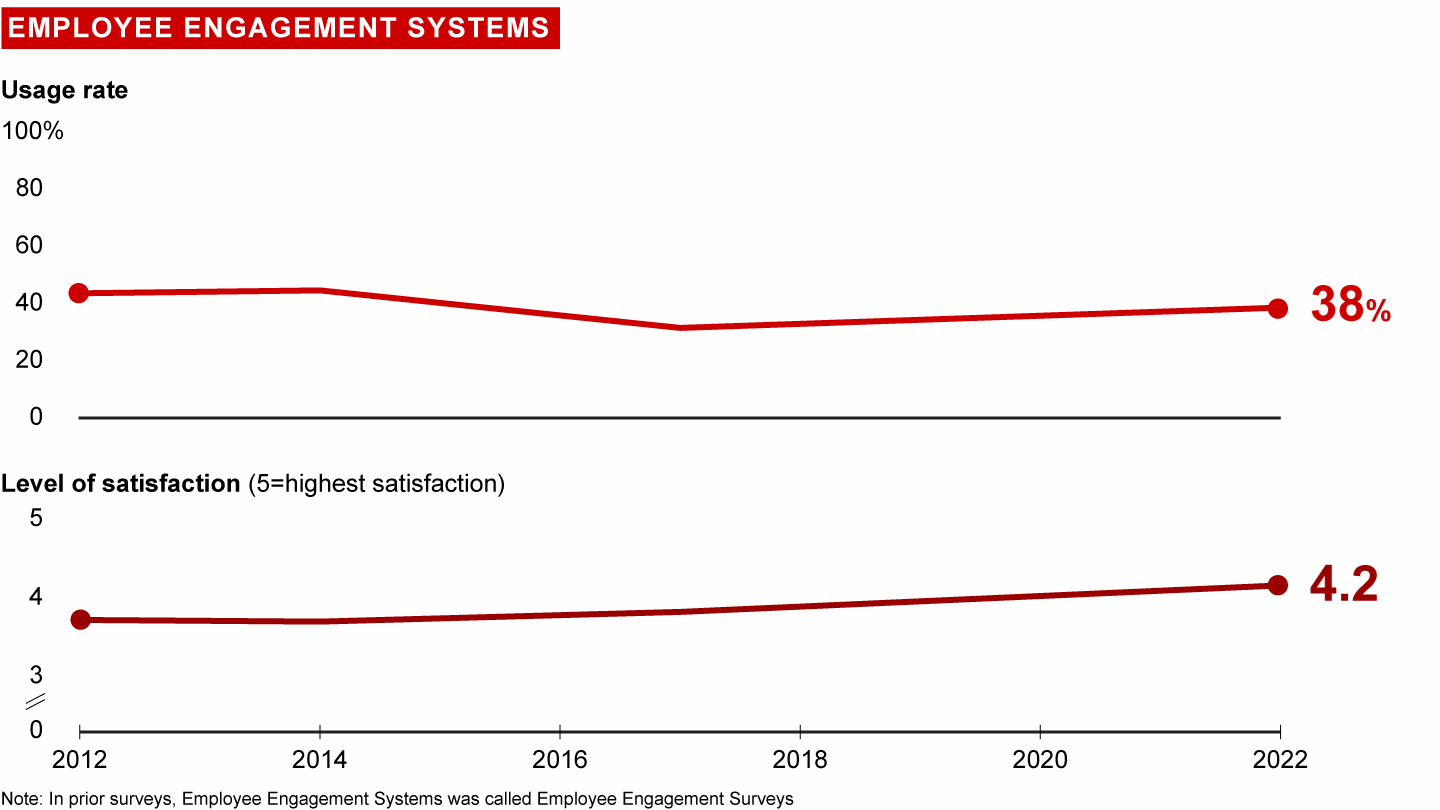Management Tools
What Are Employee Engagement Systems?
Employee Engagement Systems are tools, processes, and procedures used to drive employee enthusiasm and commitment to their work and company.
Employee engagement tools such as surveys and other analyses assess the degree of employees’ attachment to their jobs, colleagues, and organization, and help determine their willingness to go beyond the basic parameters of their job. They can also be used to understand what factors have the greatest impact on engaging employees, and to predict employee retention.
Usage and satisfaction among survey respondents


To address employee challenges and promote strengths, companies establish closed-loop feedback channels. In regular huddles, teams share concerns, identify areas for improvement, and commit to changes. Other forums address department or organization-wide improvements.
It is important that companies act on feedback, pilot initiatives to improve engagement, and communicate results on an ongoing basis.
How Are Employee Engagement Systems Implemented?
Employee Engagement Systems help companies identify and build on the strengths and talents of their workforces to gain a competitive edge. Managers should:
- Evaluate a variety of data sources to understand key drivers of engagement. Key data sources often include anonymous surveys, employee suggestions, predictive modeling based on previous surveys, in-depth discussions with employees at all levels, and social media. Engagement motivators usually include employee satisfaction with the impact of their work, rewards, relationships, values, mission, sustainability, and working environment.
- Translate key engagement motivators into a short survey that respects employees’ time and yields the most important insights.
- Conduct employee engagement surveys frequently enough to generate a steady stream of information about engagement levels and ideas for improvement.
- Develop a cadence of regular, focused touchpoints to share learnings, provide active coaching, empower employees to act, and enable a closed-loop feedback channel for communications (including escalations to senior leadership).
- Make sure employee engagement is a top priority for frontline managers and employees themselves, with reliable procedures for quickly responding to feedback and developing solutions to key issues.
Related Topics
What Are Common Uses of Employee Engagement Systems?
Employee Engagement Systems create virtuous cycles of employee advocacy. Companies use these systems to:
- Develop more productive, satisfied, and motivated employees by instilling a sense of purpose and autonomy, as well as a strong affiliation with the company and its offerings
- Create an emotionally safe environment, with the right tools to perform work for fair compensation
- Understand what investments will have the greatest impact on employee engagement
- Cultivate more satisfied and loyal customers by improving employee engagement and overall business performance
- Increase workforce retention, reducing the costs of turnover and training

Management Tools & Trends 2023
On the 30th anniversary of our survey, managers seem surprisingly upbeat.